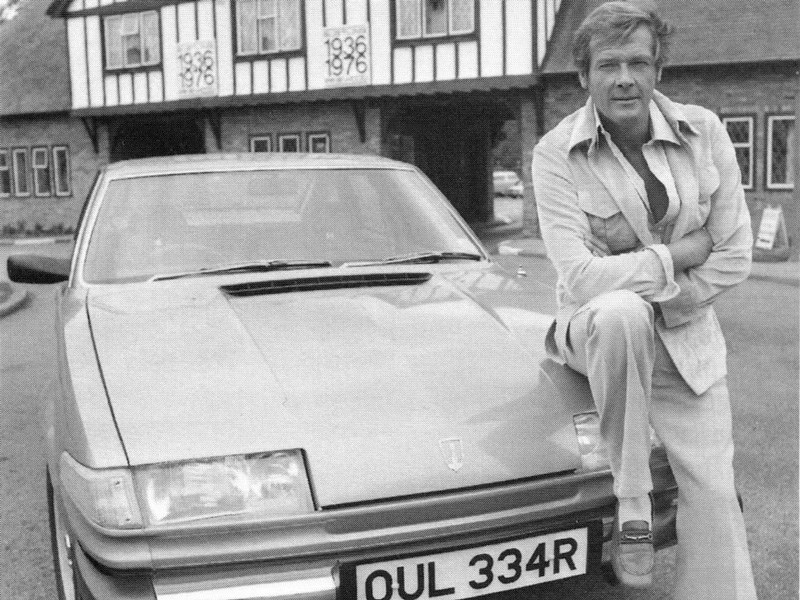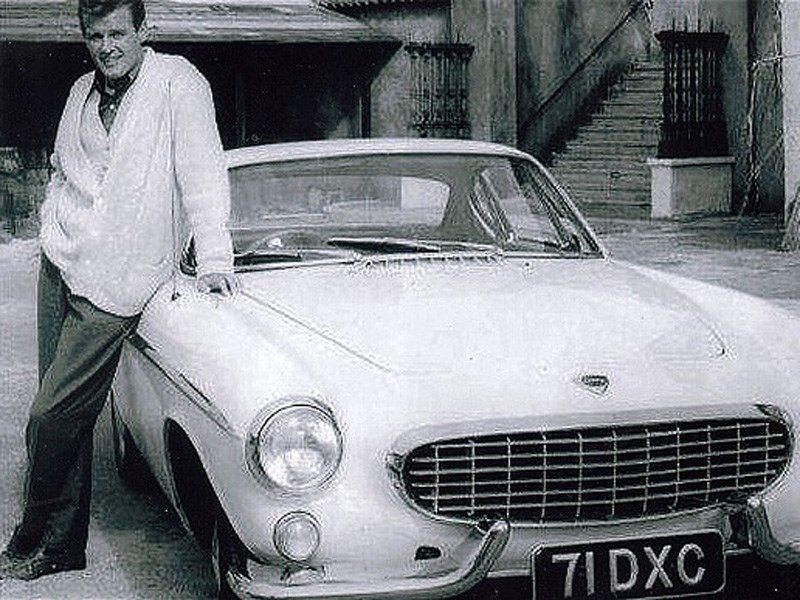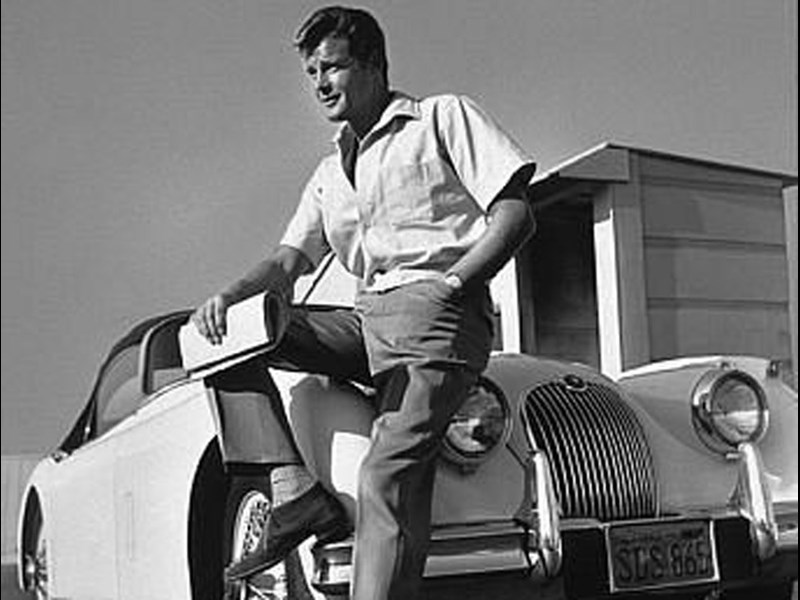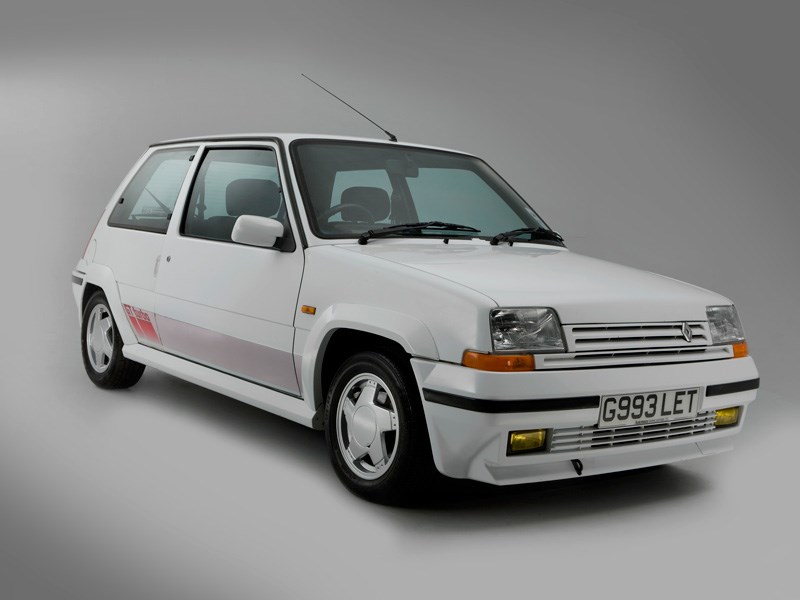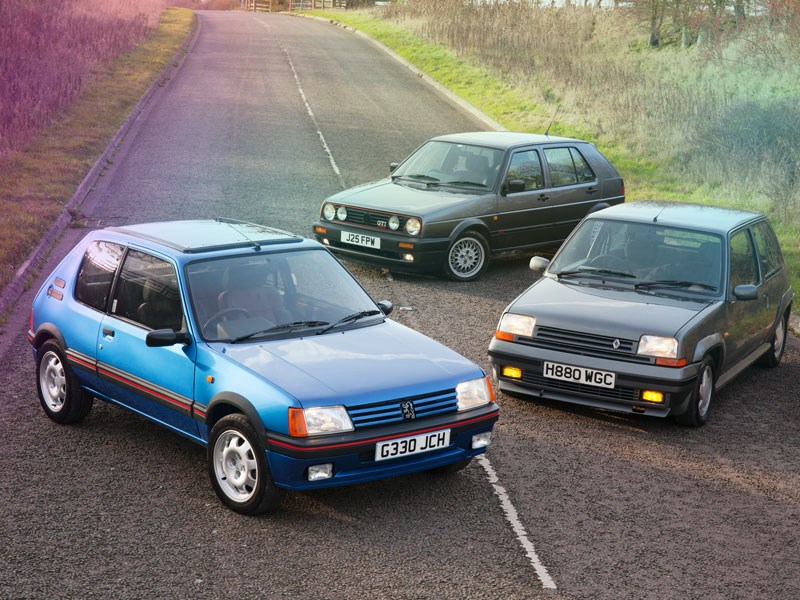Try to think of an iconic 1980s car and it’s entirely understandable if the first mental image you summon has two seats and more than 400bhp. This was the decade of automotive excess when no teenager’s bedroom wall was complete without at least one supercar poster; when Miami Vice was iconic rather than ironic.
Yet arguably the more significant performance car development of the era happened at the other end of the market – the arrival of the hot hatch, as makers realised the easiest way to add glamour to mainstream models was with go-faster versions. Many have rightfully been forgotten, but not these three, all wearing a variation of the genre-defining 'GT' badge. The Golf GTI had kicked the whole thing off, with the original arriving in the UK in 1979. The MkII was bigger and brawnier, with our 16-valve version and its more powerful 139bhp engine atop the pile. The Peugeot 205 GTI came later, but received the sort of response normally reserved for boybands; this 1.9 version has just emerged from a restoration that’s made it probably better than when new. And while the Renault 5 GT Turbo didn’t win so much critical acclaim when it was new, time has brought the realisation that this turbocharged ankle-biter was one of the era’s most exciting cars. So which is most convincing today?
Renault 5 GT Turbo 1985-1991
Why it’s here: As the car that introduced turbocharging to a whole new part of the market
It’s probably been a while since you last saw a Renault 5 GT Turbo, and considerably longer since you clocked one like this – completely standard. The blown R5’s combination of affordabillity, tuneability and – it must be admitted – fragility all worked to reduce its life expectancy to below that of a drunk knife-thrower's assistant. Many were blown up by excessive power hikes, run into the ground by uncaring owners or wrapped around solid objects. The car we’ve borrowed is part of Renault’s private collection and is in pretty much exactly the same condition as it left the factory 26 years ago.
Back in the 1980s, everyone wanted a turbo badge. Fabergé even used the name for a brand of aftershave. Renault had built turbocharged R5s before, most famously the mid-engined version that went rallying, but the second-generation GT Turbo was a far cheaper way to enjoy the boosty charms of forced induction. The engine itself was an old-fashioned 1.4-litre pushrod unit that could trace its origins to the 1960s, but a reworking and the addition of a Garrett turbocharger pushed output to 118bhp in Phase II cars like this one, with many owners opting to boost that number considerably upwards. Not a bad figure for a car that weighs just 850kg.
The lack of mass is evident in every other part of the car. The doors feel light and sound hollow when you shut them, the steering wheel vibrates as the engine fires into life. Cabin plastics have clearly outlived their design life by about 400 per cent, feeling cheap and insubstantial. It’s almost as utilitarian as any other R5, lacking even a proper catch for the glovebox that just locks in a hole punched in the dashboard. It’s no surprise the trim rattles and squeaks as the car starts to move; it probably did when new.
Yet the dynamic cues feel far more solid. The steering lacks power assistance and is relatively low-geared, but behind the weight it’s bristling with feedback even at low speeds. The gearshift has a lovely weight and accuracy to it, and – behind an initially wooden-feeling pedal – the brakes bite hard, while the throttle response is sharp enough to be used for surgery. Not that, on first impressions, there seems to be a huge amount of performance to call upon…
That’s because, unlike modern turbos, the 5 GT only gets going at the top of its rev range. The turbo boost gauge that sits beneath the rev counter flicks to full as the engine passes the 4000rpm mark, but with little corresponding increase in acceleration. Just as you’re wondering if one of the turbocharger’s pipes has come off, and are most of the way to the red line, the boost arrives like a police raid. One moment nothing, the next your knuckles are tightening around the wheel as the front end fights for traction, certainly on the damp roads we drove the car on. It’s a proper adrenaline spike and the core of the car’s appeal; you have to really thrash it to get the best from it.
The chassis does a decent job of digesting the peaky power delivery. There’s some torque steer when the turbo starts to spin exiting a corner or on rougher surfaces, just enough to make the GT feel exciting rather than wayward. The steering is accurate, grip levels are keen and the Renault attacks a twisty road like an enthusiastic terrier on a short leash. Most importantly there’s a good balance between the relative grip levels of both axles; too much speed sees the front run wide, backing off gets the 5 tightening its line or even cocking one of its rear wheels.
Relaxing it isn’t. Ride quality is poor and cruising is loud enough to drown the best efforts of the feeble period stereo. But it’s viscerally thrilling in a way that no modern car would ever be allowed to be.
Peugeot 205 GTI 1984-1994
Why it’s here: Brilliant to look at and still brilliant to drive. The seminal '80s hot hatch
Time has already delivered its verdict on the 205 GTI, with values of immaculate examples rising close to and sometimes even beyond its list price when new.
Yet behind the cute styling the GTI has always had a dark side, the praise for the immediacy of its responses and intimacy of its driving experience tempered by the suggestion that, if you don’t know what you’re doing, this is a front-wheel-drive hatchback that can bite like a rear-engined Porsche on a frozen lake. This is the car that introduced the world to lift-off oversteer.
The baby Pug still looks, to employ a technical term, like the absolute business. Back in the 1980s Peugeot knew how to make handsome cars, and the 205 was arguably the most stylish of the lot. The GTI has big alloy wheels filling its arches and a form-enhancing bodykit. It also puts a tick against all those period must-haves: red bumper stripes, an air dam and front foglights. In the cabin there's ample proof that a relative lack of toys and equipment doesn’t have to mean a paucity of design; okay, so the trim doesn’t feel much more sturdy than that of the Renault 5, but has there ever been a better-looking set of instruments than the GTI’s Veglia dials, Delta Integrale-aside?
Geeks can argue for hours about the optimum GTI spec. The 1.9-litre engine only had fractionally more power than the 1.6, the smaller unit also revs with more enthusiasm and has lower gearing, but the 1.9 motor also brought inch-larger alloys and all-round disc brakes. This limited-edition Miami Blue example is fully loaded by the austere standards of the 1980s with grey leather seats, a sunroof, electric front windows and power steering. Peugeot specialist Pug1Off has just completed a full restoration for a expense-not-sparing owner and this GTI is probably in better condition than when it left the factory – even the headlights sparkle with new reflectors.
The power steering doesn't smother the sensation, rather it helps just enough to allow a quicker-ratio rack than the 1.6. There’s just more feedback now on modern tyres thanthere was back in the day. Within a few yards you'll fall hopelessly in love with it.
The impressive thing about the GTI is the level of dynamic precision in what was, behind the hype, a gussied-up version of a basic hatchback. The steering feels pin-sharp, delivering the sort of connection you’d expect from a proper sports car. The accelerator pedal has little travel and the footwell feels tight, but responses are perfectly proportional and the taut chassis gives the sort of throttle adjustability normally reserved for powerful rear-drivers, much more than either of the other cars here. It’s not snappy – Pug1off’s Matt Jobling reckons that extreme oversteer is normally a function of poor alignment and cheap tyres – but you do still need to maintain a healthy amount of respect for the 205’s tendency to go sideways if you step off the throttle when the suspension is really loaded up. Learn to ease the gas fractionally and you discover far more subtle responses: the rear axle neutralises a too-wide cornering line or even edges into a neat slide.
The power delivery lacks the binary excitement of the Renault’s gusty motor. The Pug loves to rev, but it lacks the fuse-lighting moment you’re half expecting to find as the revs ascend. The gearshift is clean and accurate, if not quite as weighty as the R5’s, and the firm, easily modulated brake pedal would be a revelation to anyone who has only experienced the over-servo'd stoppers in Peugeot’s more recent offerings. All in all it comes close to delivering a dynamic masterclass – not too shabby for a 30-year-old French supermini.
Volkswagen Golf GTI 16V 1987-1992
Why it’s here: The car that set the benchmark for the modern hot hatch
Some stereotypes hold true. Back in the 1980s, the Golf GTI was advertised with a TV spot in which its yuppie owner is driven to frustration by a squeaking noise in his Golf’s cabin, only to find it comes from his sleeping girlfriend’s earring. Three decades later and pretty much the first thing you'll notice about this GTI version is how solid it feels when compared with the tinny French cars.
It’s a point that illustrates the Golf’s different mission. While the Peugeot and Renault were built to deliver thrills and excitement above pretty much all else, the GTI was more grown up, as sensible and practical as any of its lesser sisters, just with an extra dose of performance. It even came with the option of a five-door bodyshell, as fitted to the car we’ve borrowed from Barry Lewis for today’s test. Yet it also caught the upwardly mobile spirit of the age – in the early 1990s it often seemed as if every GTI south of Birmingham wore a number plate proclaiming it had been sold by VW’s poshest dealership, Scotts of Sloane Square.
It carried a suitably aspirational pricetag. In 1987 the GTI 16V cost £11,217 – nearly two grand more than the 205 GTI 1.9 and a whopping £3500 over the Renault 5 GT. Yet inside the cabin feels gloomy and toy-free – this 1991 model still has wind-your-own windows and more blanking plates on the dashboard than actual switches. At least there’s a trip computer to look at, albeit with a display screen seemingly borrowed from a Casio digital watch.
The much-vaunted 16-valve engine starts with a surprisingly gruff idle. The golf-ball-shaped gearlever is a nice touch, although the shift action has a long throw, but at lower speeds the GTI feels very much like a cooking Golf of the same era. The ride is impressively pliant, the cabin is hushed and all the controls produce proportional responses. But there’s no sense that it's straining at the leash. Until the first derestriction sign you find yourself wondering just what the fuss is all about.
Yet revs make it good. The GTI is one of those cars that gets better the harder you drive it. The 16-valve engine delivers its extra urge pretty much entirely at the top end, meaning that you have to push it practically to the 7000rpm red line to get the best out of it. Do so and it practically pops a can of spinach, engine note hardening and the driver’s seat applying a surprising amount of pressure to your back.
The Golf might be the heaviest car here, but it still only tips the scale at 965kg, less than a modern Polo. It definitely feels considerably quicker than its eight-valve sister, despite the engine chucking out only 27bhp more.
The 16V’s power-assisted steering lacks the voluble communication of the French cars, but there’s a decent impression of what’s going on behind its lighter weighting and there’s plenty of grip to call on. The chassis reveals a serious side when asked to go faster, not quite losing its low-speed suppleness but firming up nicely under bigger loadings in corners and over crests. While the French duo both make you work for quicker progress, the Golf is one of those cars that just flows at an impressive rate. It can’t match them for adjustability or involvement, but our conclusion after a day in the Fens was that it gives away nothing in terms of back-road pace.
Hindsight has also proved that the GTI possessed the crystal ball in this company, a more accurate predictor of the direction the market would move – towards bigger and more sensible hot hatches, the sort that combine performance with a decent dose of creature comfort. The MkII GTI was arguably the car that got there first and that's probably a large part of the reason it still exerts such a strong appeal to modern buyers.
The Modern Classics view
You might feel that buying one of these cars now would be like arriving late to a party. It’s not long since you could pick up any of them for peanuts compared with their values now and although they might well carry on climbing, investments can go down as well as up.
But we’re not here to suggest a speculative punt, rather to celebrate three cars that are all still brilliant to drive and own. Just looking at this trio is practically guaranteed to get nostalgia tingling in anyone who grew up alongside them, while driving two of them delivers the sort of thrills normally only found by adding neurotoxins to your bloodstream.
The Golf goes first. It's a bit too sensible in this company. If you’re looking for an 1980s hot hatch for everyday use then it’s the obvious choice, and that’s against practically any other car from the same period, no matter the price.
The R5 GT Turbo goes next. It never won the same plaudits as the Golf or Peugeot, but as cars have got fatter and safer, its minimalist rawness has become more emphatically more appealing. It tingles and snorts, but doesn't quite light the synapses as much as we'd have liked.
The 205 GTI, on the other hand, is still an exceptional car to drive. No modern hot hatch gets close to its intimately connected driving experience. It'll be superb to own, as it’s a known quantity, one that’s been a hero since launch, and which has a great support network. If you get a good one, it'll appreciate nicely, too.
You’ll have your work cut out to find a good one of course, but it’s worth making the effort.





















